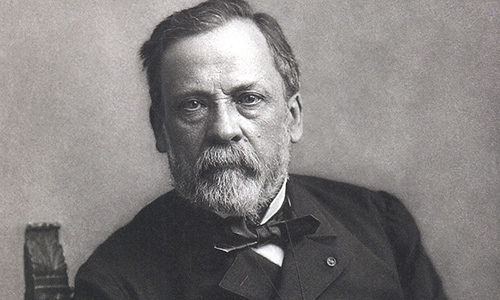• French Chemist
Born on December 27, 1827 in Dole, in the Jura region of France, Louis Pasteur was one of the most important contributors in different fields of science especially on medical microbiology. Pasteur was a French chemist whose work became the foundation for the science of microbiology and a cornerstone of the modern medicine.
• Pasteur’s Education
As a child, Louis Pasteur shows great talent when it comes in drawing and painting. His father, Jean-Joseph Pasteur, gave him the highest education he could, Louis then entered Ecole Normale Superieure in Paris where he earned his Bachelor of Arts degree (1840), Bachelor of Science degree (1842), and a doctorate (1847).
• Pasteur’s Family
When Louis Pasteur was appointed as a Chemist professor in the University of Strasbourg in 1848, he met a woman that would later be his wife. The couple was married on May 29, 1849. They were blessed with five children (1 son and 4 daughters), but only two had surpassed childhood. Pasteur was devoted to his family throughout his life.
• Molecular Asymmetry
Inspired by the discovery of a German chemist, Eilhardt Mitscherlich,Louis had made his own discovery on the foundation of stereography, molecular asymmetry. His research had brought together the principles of crystallography, optics, and chemistry.
• Pasteurization
The widely known process of Pasteurization was accidentally discovered by Louis Pasteur. At that time, Louis was a Chemistry professor and at the same time as a dean of the science department at the University of Lille and was assigned to help solve the problem with the manufacture of alcoholic drinks. During his research, he developed the process of Pasteurization which is the heating then cooling the liquid to remove the bacteria that causes the souring of alcoholic drinks. This process is now used in different food products worldwide.
• Spontaneous Generation Theory
Spontaneous generation is a theory which states that life could generate from non-living organisms. This theory was still pursued by English and French naturalist, namely John Tuberville Needham and George-Louis Leclerc. However, Louis Pasteur proved that the theory was wrong. He used a simple experimental procedure using beef broth with a swan-neck flask. No bacteria had been produced in the absence of oxygen in the beef broth.
• Silkworm Disease
After being appointed as the professor of geology, physics, and chemistry at the School of Fine Arts, Louis Pasteur was assigned to France’s silkworm crisis upon the request of his former mentor Dumas. He took charge of the research about the disease that spread all over Europe. He succeeded on his duty to save the industry with his method that preserves healthy silkworm words. This method is still used globally today.
• Pasteur Institute
L’institut Pasteur, also called the Pasteur Institute, is a non-profit research institute founded by Louis Pasteur on June 4, 1887 in Paris, France. This institute focuses on the studies of micro-organisms, infectious diseases, viruses, and vaccines. Louis Pasteur was the first to serve as the director of this institute until his death in 1895.
• Prevention of Diseases
The rest of Louis Pasture’s science life was devoted in studying diseases. He produced different kinds of vaccines from different kind of diseases like chicken cholera, anthrax, swine erysipelas, and rabies.
• Anti-Rabies
A 9 year-old boy named Joseph Meister was the first one to be treated from the infection of rabies with the help of Louis Pasteur. Joseph’s mother came for Louis Pasteur’s help in order to save his son from a certain death. Joseph recovered perfectly and remained healthy for the rest of his life.











Leave a Reply